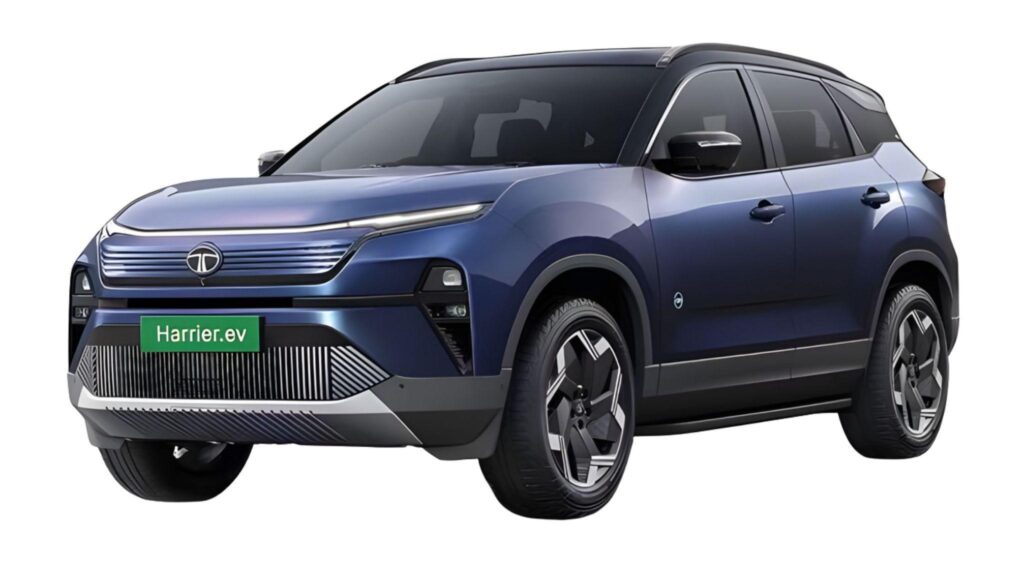Tata Harrier EV: Blending Style, Technology, and Sustainability
The Tata Harrier EV represents the next phase in Tata Motors’ evolution — a blend of powerful SUV design, advanced electric technology, and sustainable mobility. Unveiled as part of Tata’s growing electric vehicle lineup, the Harrier EV reimagines a familiar favourite with future-ready engineering. Built on Tata’s Gen 2 EV architecture, it combines strong performance, premium interiors, and cutting-edge connectivity with a lower environmental footprint.
Here’s a closer look at how the Harrier EV brings together style, technology, and sustainability to redefine India’s premium electric SUV segment.
Bold and Confident Design
The Tata Harrier EV builds on the muscular proportions of the original Harrier, but with subtle changes that set it apart as a modern electric SUV. The design evolves under Tata’s “Digital Design Language”, giving it a sleeker, more aerodynamic look while retaining the Harrier’s trademark toughness.
Key highlights include:
- Connected LED DRLs and tail lamps that span the width of the SUV, giving it a futuristic light signature.
- R19 Aero Blade alloy wheels are designed to optimise airflow and reduce drag.
- Closed-off front grille and a new EV-specific bumper that signal its electric identity.
- Illuminated Tata logo and subtle “EV” badging.
The Stealth Edition adds darker exterior elements and Satin Black accents for those who prefer a bolder presence. With a strong stance and refined detailing, the Harrier EV merges rugged appeal with aerodynamic efficiency — essential for improving range and performance.
Premium, Tech-Laden Interiors
Inside, the Harrier EV moves into a new era of digital sophistication and comfort. The cabin layout feels both luxurious and purposeful, reflecting Tata’s push toward connected, human-centric design.
Standout features include:
- A 36.9 cm (14.53”) Harman cinematic touchscreen display powered by Samsung Neo QLED technology, offering sharper visuals and smoother operation.
- A 10.25-inch driver information cluster that provides EV-specific data such as battery percentage, range, and regenerative braking intensity.
- A floating centre console with a crystal-like gear selector adds to the futuristic theme.
- Powered ventilated seats, multi-zone climate control, and a panoramic sunroof for all-round comfort.
- Ambient lighting with 64 colour options and sound-synchronisation mode.
The rear seats feature Powered Boss Mode with recline control, while the cabin is lined with sustainable materials such as soft-touch vegan leather and recycled plastics. Every detail — from ergonomic switches to the seamless touchscreen interface — is designed to elevate convenience and driving comfort.
Powertrain and Performance
The Tata Harrier EV is engineered to deliver capability and confidence through an advanced all-electric powertrain. It comes with two battery pack options — 65 kWh and 75 kWh, offering certified ranges of 538 km and 627 km respectively (MIDC-certified).
The SUV’s dual-motor configuration enables all-wheel-drive (AWD) functionality, producing up to 504 Nm of torque. It accelerates from 0–100 km/h in just 6.3 seconds, placing it among the quickest electric SUVs in its class.
The Harrier EV also features:
- Multi-mode regenerative braking with adjustable intensity.
- Terrain Response Modes: Normal, Snow/Grass, Mud-Ruts, Sand, Rock Crawl, and Custom.
- Drive Modes: Eco, City, and Sport.
This setup allows the Harrier EV to retain the off-road spirit of the original diesel variant while adding smooth electric torque and whisper-quiet refinement.
Connected Technology and Innovation
The Harrier EV isn’t just about electrification — it’s a showcase of intelligent mobility. The SUV runs on Tata’s t.idal digital architecture, a next-gen connected ecosystem integrating AI, cloud, and hardware for real-time data and control.
Highlights include:
- Harman AudioworX sound-tuned system with voice-enabled controls.
- Mappls integrated navigation and DrivePay for in-car payments.
- ev connected suite with remote vehicle health reports, charging updates, and geofencing alerts.
- Smartwatch connectivity for remote start, climate control, and location tracking.
- Vehicle-to-Load (V2L) and Vehicle-to-Vehicle (V2V) charging capabilities, enabling the car to power appliances or charge another EV.
All these features ensure that the Harrier EV stays connected to both its driver and its environment — a hallmark of future-ready design.
Safety and Driver Assistance
Safety remains one of the Harrier EV’s strongest pillars. The SUV carries a 5-star Bharat NCAP rating and integrates an advanced Level 2 ADAS (Advanced Driver Assistance System) with 22 features, including:
- Adaptive Cruise Control.
- Autonomous Emergency Braking.
- Lane Keep Assist and Blind Spot Detection.
- Rear Cross-Traffic Alert.
- Traffic Sign Recognition.
Seven airbags, a 540° surround vision camera, and a transparent chassis view complement the ADAS suite, providing complete visibility in tight situations. The SUV also offers i-VBAC (Intelligent Vehicle Braking and Control) and an Acoustic Vehicle Alert System (AVAS) for pedestrian safety.
Sustainability and Future Readiness
The Harrier EV underscores Tata’s commitment to sustainable engineering. Its battery packs are designed for durability and recyclability, while its production process integrates energy-efficient manufacturing practices. The use of eco-conscious cabin materials further reduces its environmental footprint.
Beyond the product, Tata’s growing EV charging network and partnerships for home charging installations make owning the Harrier EV convenient and practical.
Final Thoughts
The Tata Harrier EV perfectly encapsulates Tata Motors’ approach to electric mobility — a balance of style, technology, and sustainability. It carries forward the Harrier’s legacy of robust design and capable performance, now infused with electric power and advanced intelligence.
With its dual battery options, AWD capability, and connected technology, the Harrier EV bridges the gap between rugged adventure and eco-conscious sophistication. It’s a clear statement that the future of SUVs doesn’t mean compromising on excitement — it means reimagining it for a cleaner, smarter world.



